NRAO Newsletter
Volume Vol#, Issue Iss#
Day# Month# Year#
NRAO Newsletter
Volume Vol#, Issue Iss# • Day# Month# Year#
 The Robert C. Byrd Green Bank Telescope, West Virginia, home to the next generation radar project presented at the February 2024 American Association for the Advancement of Science conference. Photo by Jay Young.
The Robert C. Byrd Green Bank Telescope, West Virginia, home to the next generation radar project presented at the February 2024 American Association for the Advancement of Science conference. Photo by Jay Young.
Upcoming Events

Science Futures: Simons Foundation
March 6-12, 2024 | Mt. Irvine, Trinidad and Tobago

International Symposium on Space Terahertz Technology (ISSTT)
April 7 - 11, 2024 | Charlottesville, VA

20th Synthesis Imaging Workshop
May 15 - 22, 2024 | Socorro, NM
NRAO at the AAAS in Denver

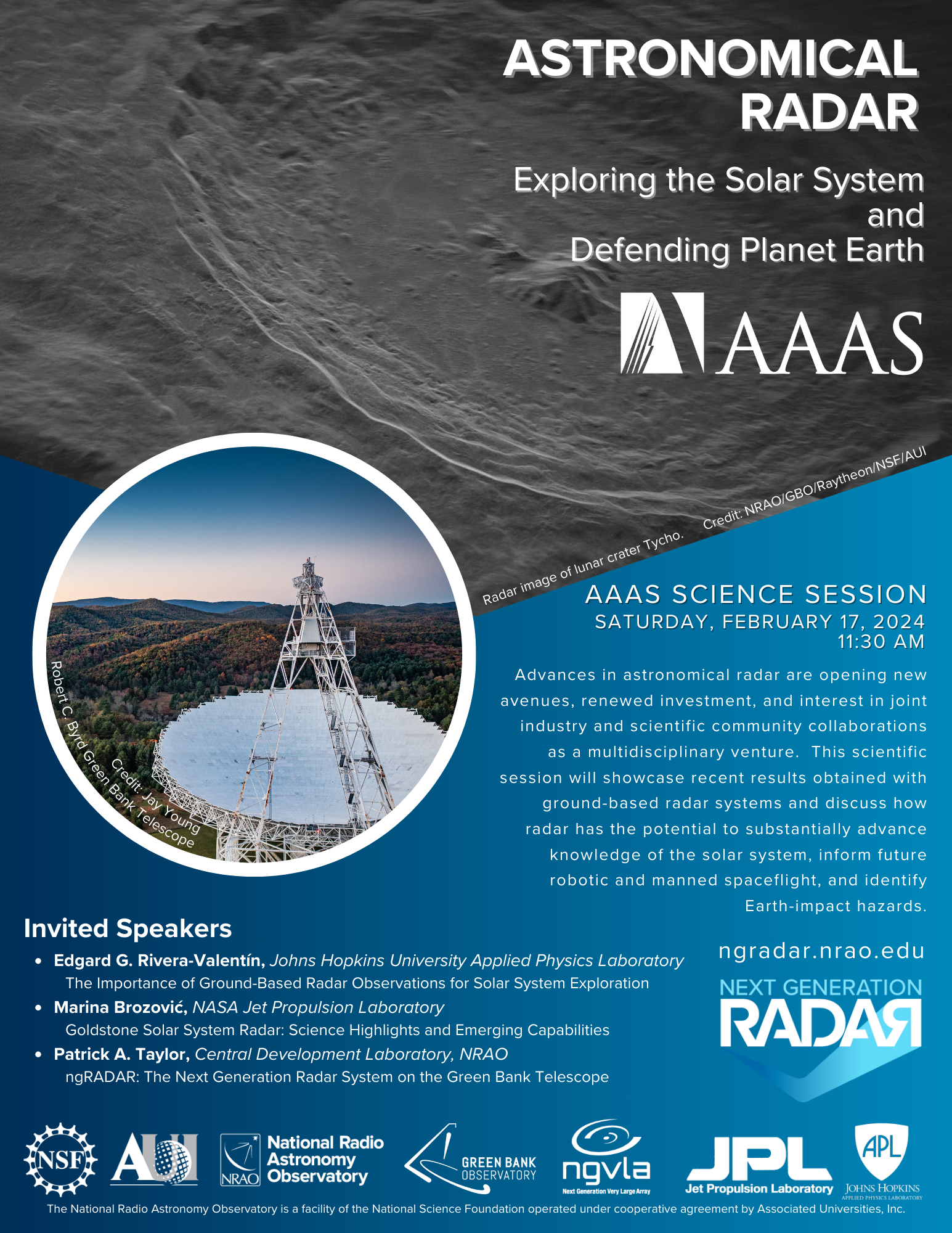
The National Radio Astronomy Observatory and Green Bank Observatory visited the city of Denver, Colorado at the 2024 Meeting of the American Association for the Advancement of Science (AAAS). The conference theme this year was Toward Science without Walls and brought together professionals from science, medicine, engineering, and industry. In addition to participating in the exhibition, NRAO and GBO proposed a special science session to the membership that was accepted, entitled Astronomical Radar: Exploring the Solar System and Defending Planet Earth.
Invited talks were given by:
- Edgard G. Rivera-Valentín, Johns Hopkins University Applied Physics Laboratory The Importance of Ground-based Radar Observations for Solar System Exploration
- Marina Brozovic, NASA Jet Propulsion Laboratory Goldstone Solar System Radar: Science Highlights and Emerging Capabilities
- Patrick A. Taylor, NRAO Central Development Laboratory The Next Generation Radar System on the Green Bank Telescope
Read the press release by Jill Malusky and article in The Economist by Geoffrey Carr.
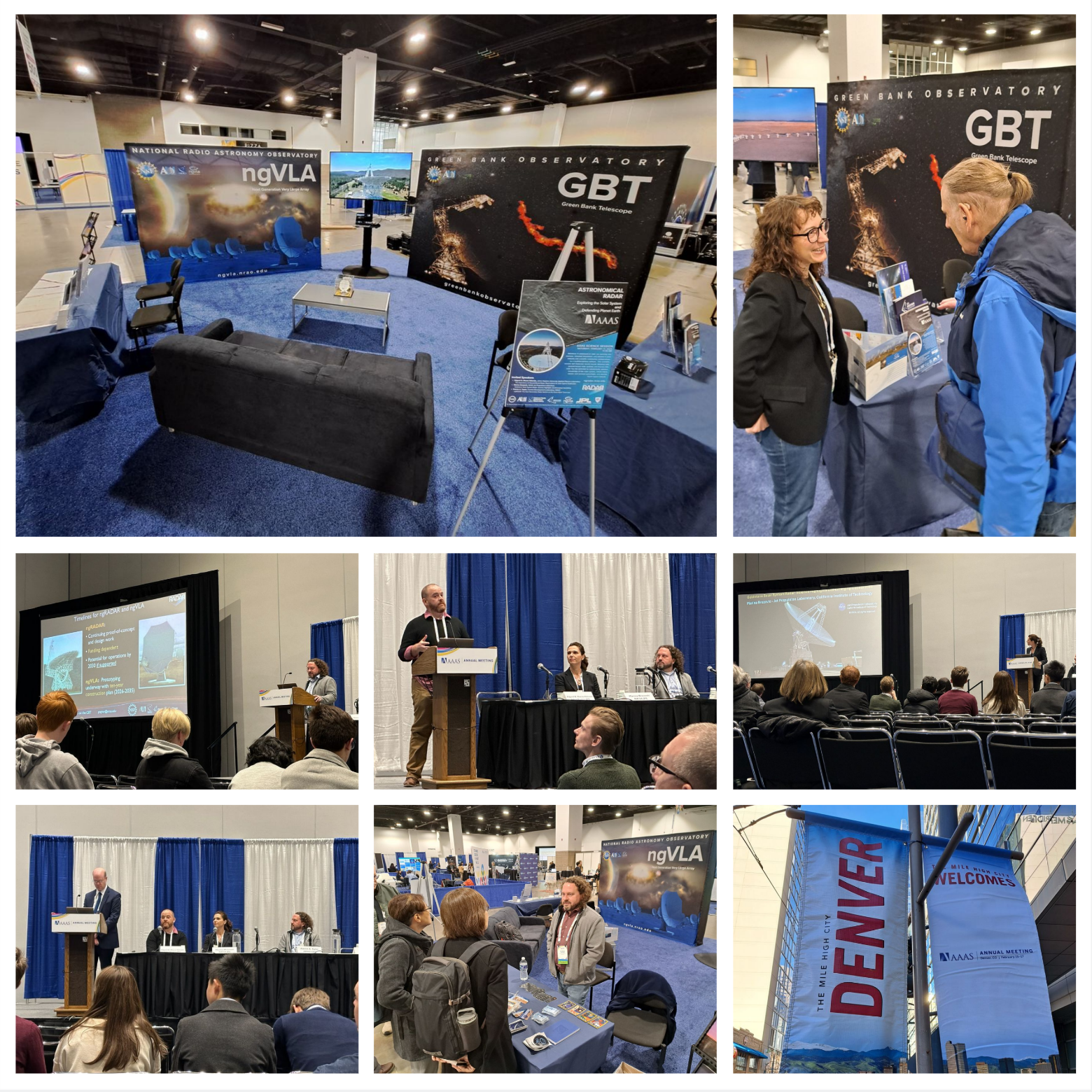 Photos courtesy of Brian R. Kent and Jill Malusky.
Photos courtesy of Brian R. Kent and Jill Malusky.
ALMA Program News
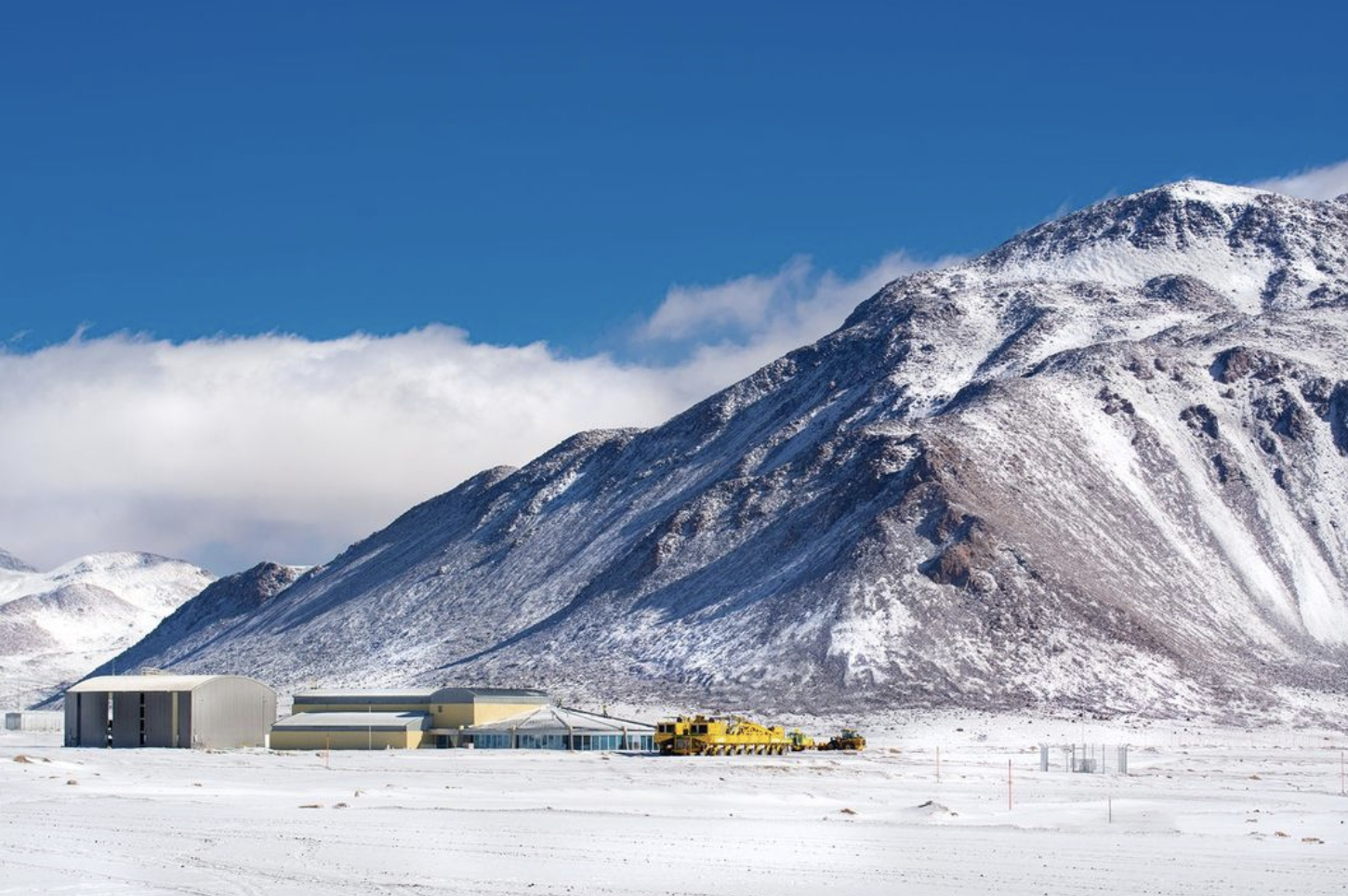 A quiet day at the Array. S. Otarola
A quiet day at the Array. S. Otarola
ALMA Observing Status
The February engineering period began on schedule on 29 January; its planned end is 29 February, when the array will resume Cycle 10 observations in compact configuration C-1.
ALMA News
As a result of an International selection process, Sergio Martin has been appointed as Head of the JAO Department of Science Operations, with an effective date of March 1st, 2024.
The ALMA Wideband Sensitivity Upgrade is progressing on schedule. A special session on the WSU was held at the AAS last month.
Cycle 11 Update
A Cycle 11 pre-announcement was released on December 19.The Call for Proposals will open on March 21 and close on April 25 for Cycle 11, which is anticipated to begin on 1 October 2024. The Pre-announcement notes that the following technical capabilities are anticipated to be available for the first time in Cycle 11:
- Highest-frequency and longest-baseline observations with Band 9 in C-10 configuration, and Band 10 in configurations of C-9 and C-10.
- Full polarization in Band 1 on the 12-m Array with the same polarization capability and accuracy as in Band 3-7.
- Band 1 on the 7-m Array for Stokes I only (no Stokes Q/U/V).
Please see the pre-announcement for additional information; full details will be published in the Cycle 11 Call for Proposals.
Upcoming Meetings
- March 3-8th, 2024: The Physics and Impact of Astrophysical Dust Aspen CO - NAASC sponsored
- March 25-29thm 2024: Debris Disks in the Sonoran Desert Tuscon AZ - NAASC sponsored
- April 8-11, 2024: International Symposium on Space Terahertz Technology, Charlottesville, VA
- April 22-26, 2024: Raising the Veil on Star Formation Near & Far - A conference in honour of Richard Hills, Cambridge, UK
- May 28-31, 2024: Spatio-spectral modeling of interferometric data: preparing for the wideband era, NRAO, Charlottesville - NAASC sponsored
- June 24-28, 2024: The Promises and Challenges of the ALMA Wideband Sensitivity Upgrade, ESO, Garching, Germany
- June 24-28th, 2024: Cool Stars, San Diego CA - NAASC sponsored
- September 24-27, 2024: Born in Fire: Eruptive Stars and Planet Formation, Santiago, Chile
Student Funding Opportunity for ALMA Archival Research
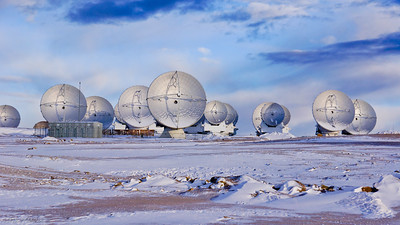
Photo courtesy of Pablo Carrillo.
The North American ALMA Science Center is pleased to announce a funding opportunity to support U.S. students working on data obtained from the public ALMA data archive. This opportunity is part of the NRAO Student Observing Support (SOS) program. Eligible expenses include a student stipend, computing hardware, and student travel to present ALMA results at a domestic conference. Awards are subject to the SOS cap of $40,000 per investigator per year, combined from any active NRAO SOS awards. While preference will be given to programs that draw from the rich archive of public ALMA data, PIs may also apply for funding to continue research on their own ALMA programs.
Applications consist of (1) a scientific justification to describe the context, aims, and anticipated scientific results of the investigation, written using the ALMA dual-anonymous guidelines, (2) a statement of the student's role in the research with a plan for publication, and (3) a statement of the PI's current and pending funding and demonstrated need.
The application deadline is May 24, 2024 and results will be announced in August 2024.
For more information, and to apply, visit the application website.
Questions about this SOS opportunity may be directed to Jim Braatz.
New Splatalogue.online Website
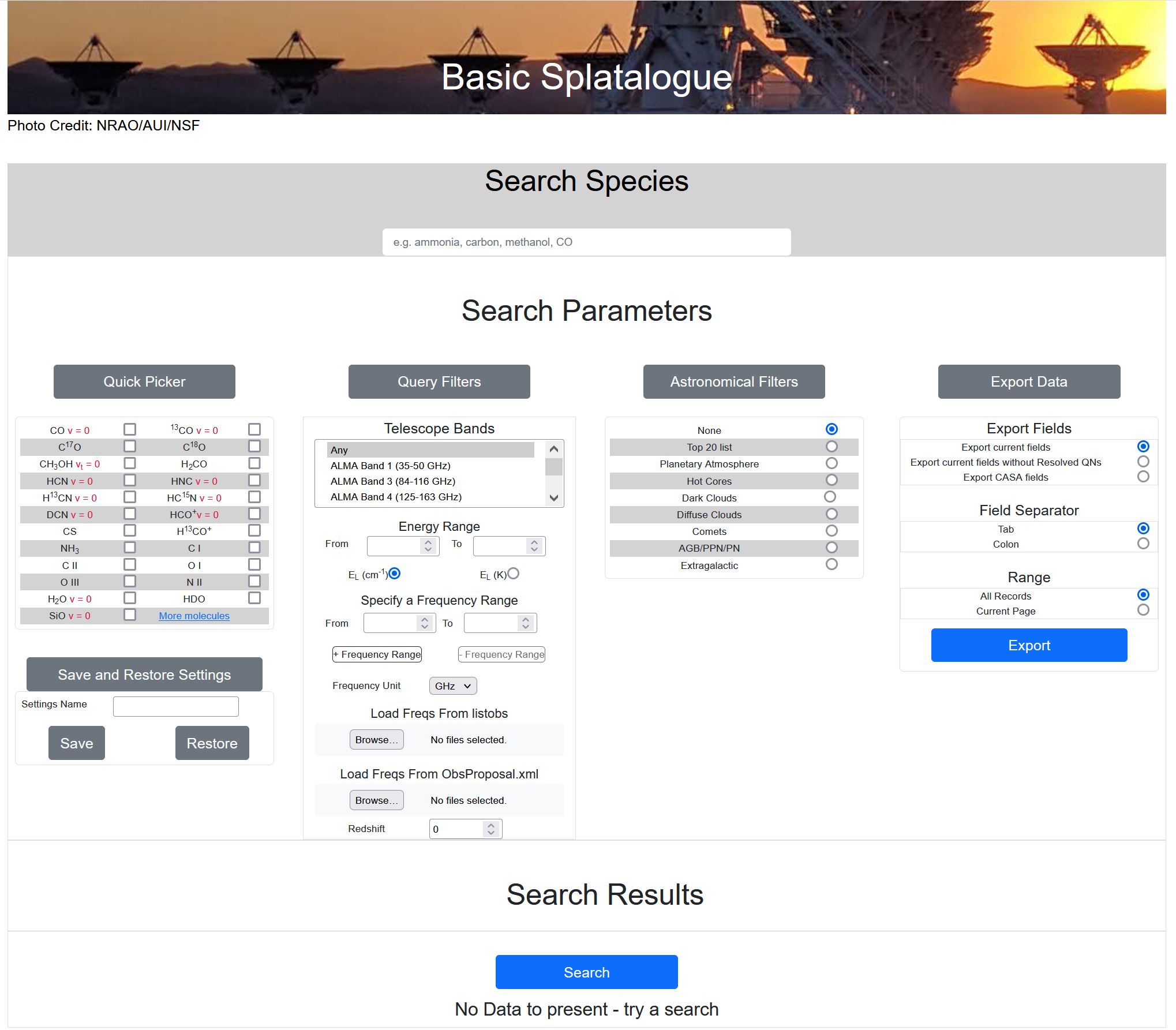
We are thrilled to announce the launch of our completely revamped Splatalogue.online website. After months of hard work and dedication, we are proud to bring you a renewed and refreshed platform that promises to enhance your experience with Splatalogue in numerous ways.
What great updates can our users expect? The website has undergone a significant technological upgrade. We have transitioned from the old PHP code, which served us well for 15 years, to a more modern and robust framework that utilizes Java and Python. This transition represents a substantial leap forward in terms of performance, reliability, and scalability as these languages offer greater flexibility, efficiency, and security, allowing us to deliver a smoother and more responsive browsing experience. Additionally, they enable us to implement advanced features and enhancements that were not feasible with the old PHP code.
One of the most significant benefits of the new Splatalogue.online website is improved accessibility. Whether you're accessing Splatalogue from your desktop, laptop, tablet, or smartphone, you will find that the website is now more responsive and mobile-friendly than ever before. This means you can easily access the wealth of information in our database whenever and wherever you need it.
Remember that Splatalogue currently services more than 3 million spectral lines. This vast repository of spectral data is a valuable resource for astronomers, researchers, and enthusiasts worldwide, and we are continuously working to expand and enhance it. We would like to extend our sincere thanks to everyone who contributed to the development of Splatalogue.online, from our talented team of developers (Chris and Daniel especially) to our dedicated community of users whose support and feedback have been invaluable throughout this process. And, as always, we are excited to continue evolving and improving Splatalogue to better serve your needs.
If you have any questions, comments, issues or concerns using either the new front page or through the IVAO Slap interfaces, please submit a Helpdesk ticket at the ALMA science helpdesk. And do not forget we are here "giving you the right frequency one line at a time" - Splatalogue.online.
ALMA Ambassadors Cycle 11 Proposal Preparation Events
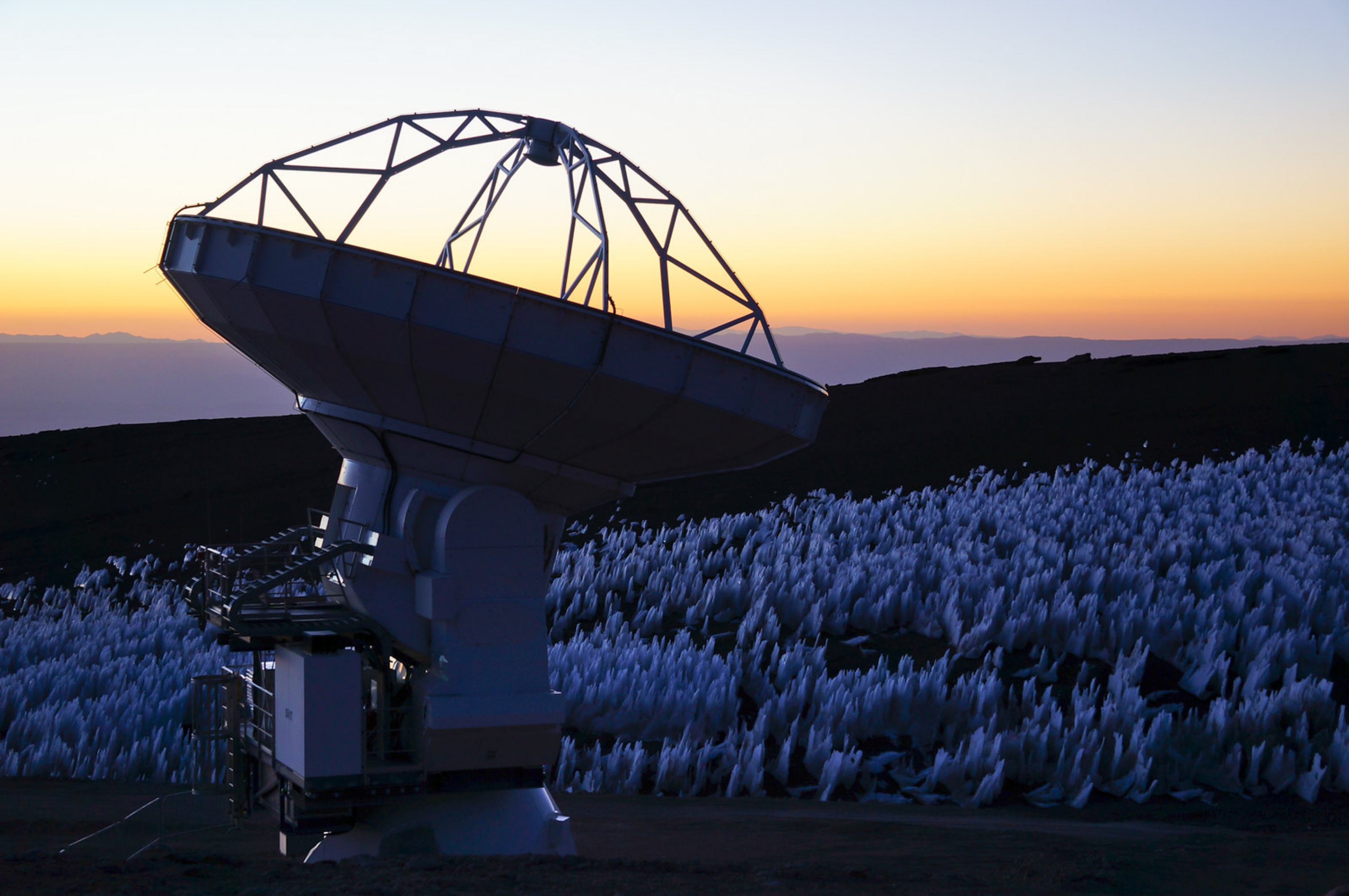
Photo courtesy of Pablo Carrillo.
In advance of the Atacama Large Millimeter/submillimeter Array (ALMA) Cycle 11 Call for Proposals deadline, the North American ALMA Science Center (NAASC), along with current ALMA Ambassadors, have organized a series of ALMA proposal preparation workshops from 21 March - 03 April 2024. The goal of these events is to provide users with the knowledge they need to carry out cutting-edge scientific research using the ALMA facilities. We are particularly interested in reaching new users, so no experience with radio astronomy is required to participate!
These ALMA talks are hosted by experienced postdocs and graduate students as part of the ALMA Ambassadors program. Registration for these events is free. The workshops are designed to assist you in proposal preparation and observation planning for ALMA Cycle 11, and may include talks on the following topics:
- ALMA Basics and Cycle 11 Capabilities
- Radio Interferometry Basics
- Cycle 11 Proposal Preparation and the Proposal Review Process
- Introduction to the ALMA Observing Tool
- ALMA Data Products, Archive Use, and Notes on the Pipeline Weblog
- Common Astronomy Software Applications (CASA) Simulations
- Science-ready Data Products
- Imaging with CASA
Information on the locations and dates for these workshops is available on the NAASC Community Events webpage and in the table below.
| Ambassador | Location | Date |
|---|---|---|
| Valentin Le Gouellec | NASA Ames | March 21, 2024 |
| Yu-Hsuan (Eltha) Teng | University of California, San Diego | March 25, 2024 |
| Stephen McKay | University of Wisconsin, Madison | March 27, 2024 |
| Mohit Bhardwaj | Carnegie Mellon University | March 28, 2024 |
| Patrick Kamieneski | Arizona State University | March 28, 2024 |
| Jack Birkin | Texas A&M University | April 03, 2024 |
Later in the year, the ALMA Ambassadors will run another series of community events focused on the processing and analysis of ALMA data. Those events will be announced in a future eNews, so stay tuned.
Post-Baccalaureate Research Fellowships
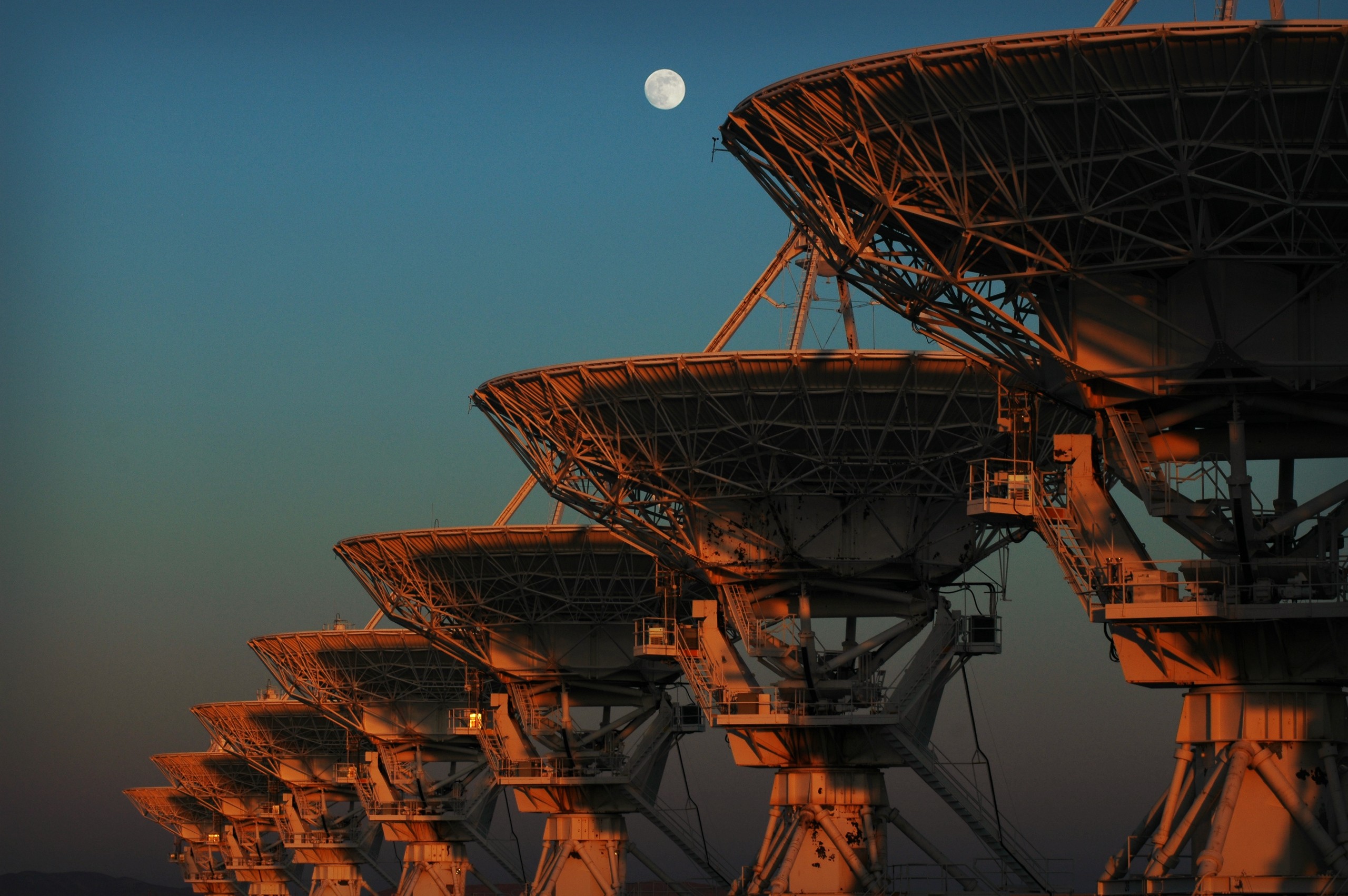
NRAO is accepting applications for the Post-Baccalaureate Fellowship Program. The program provides recent graduates an opportunity to strengthen their applications to graduate school by gaining research experience in radio astronomy or a related field. This year, appointments are available at the NRAO Headquarters site in Charlottesville, VA. Students will work on a radio astronomy research project under the mentorship of NRAO scientific staff members.
To be eligible, students must be U.S. citizens or permanent residents and must be recent graduates or soon be graduating with their undergraduate or MA degree, and should have the intention of applying to Ph.D. programs in astronomy or a related field in the next year. Appointments may range from 9 to 12 months. Students will receive financial assistance to relocate to Charlottesville, a stipend, and travel support to present their research at the January 2025 meeting of the AAS.
Applications for the Post-Bacc program consist of (1) a statement describing the student's research interests and future goals (less than 1000 words), (2) a resume, (3) an academic transcript, and (4) two or three letters of recommendation from people who can address the student's potential for a career in research. Application materials should be sent directly to Jim Braatz at the email address given below.
Applications are due May 1, 2024. More information and application instructions are available at the student programs website.
Questions about the Post-Bacc Fellowship may be directed to Jim Braatz.
20th Synthesis Imaging Summer School
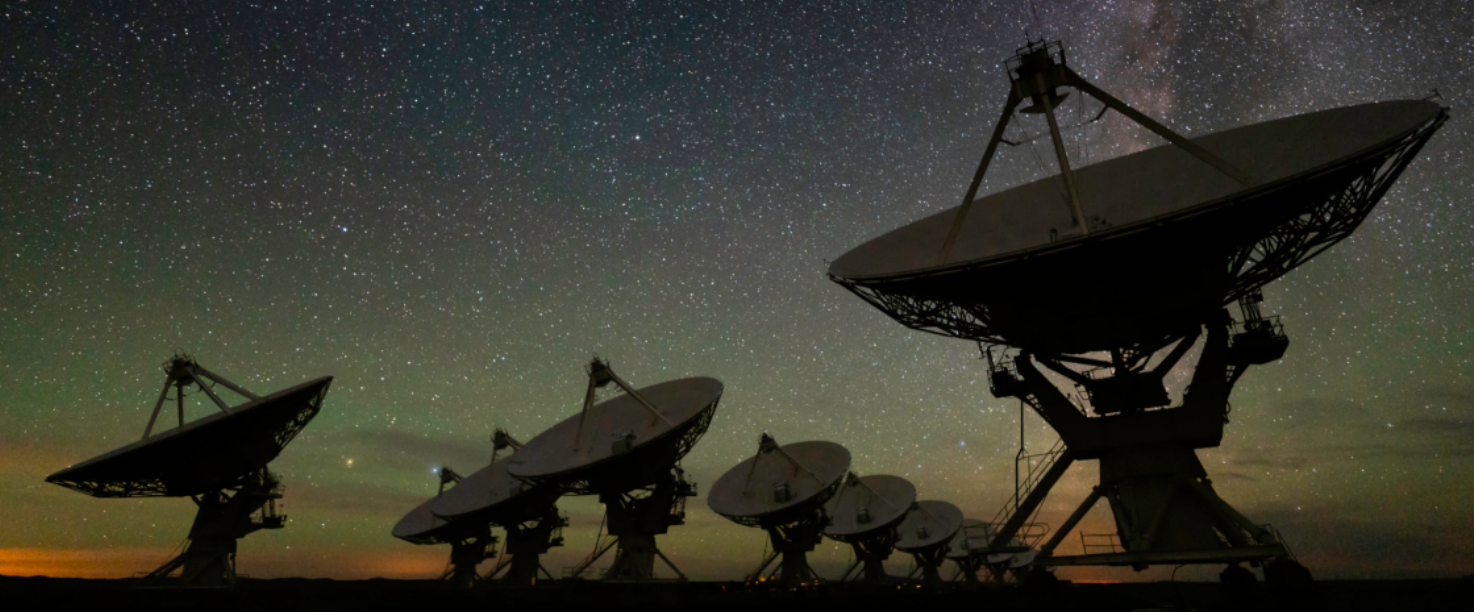
Photo courtesy of Jeff Hellerman, NRAO/AUI/NSF
The Synthesis Imaging Summer School is returning to Socorro, for an in-person workshop. The school will take place on 15-22 May 2024. The school will cover fundamental and advanced lectures on aperture synthesis theory and techniques, data calibration, imaging and analysis methods. We are planning on 1.5 days of tutorials on handling VLA, VLBA, and ALMA data. Registration for full participation in the school is required, and the school's capacity is 150 participants. The registration is now open, and will close on April 14, 2024 or when the capacity is reached. If you would like to contact organizers, please email the organizers.
Celebrating the life and science of Arno A. Penzias (1933-2024)
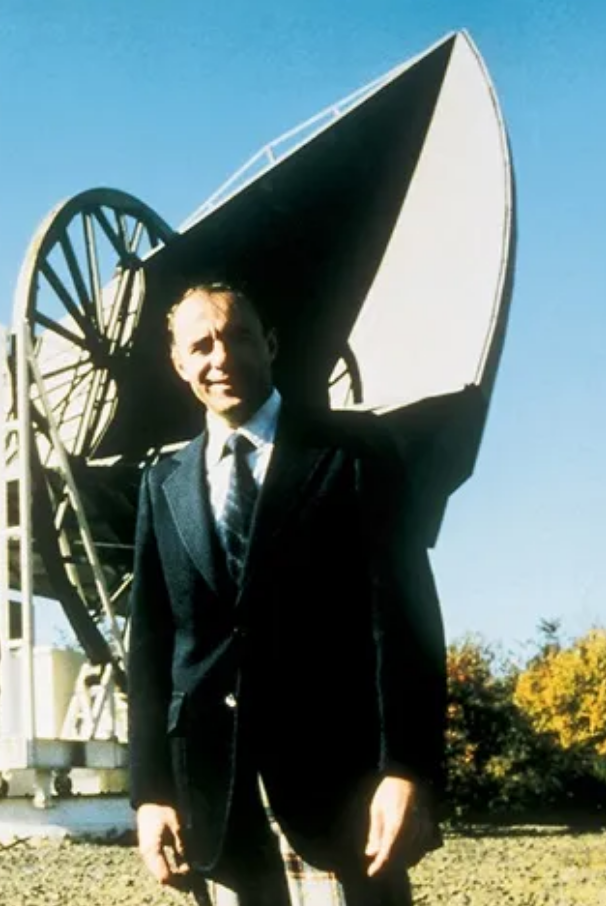
Photo courtesy of PASP.
NRAO celebrates the science and remembers the life of Arno A. Penzias, who co-discovered the cosmic microwave background (CMB) radiation with Robert Wilson. Their work using the Holmdel Horn Antenna at Bell labs detected the CMB, which has been studied by the astronomical community ever since. The antenna and land were recently acquired to support the preservation of this location, so that future generations of aspiring scientists can learn about the groundbreaking astronomical observations that took place there.
Articles about his life and career:
- Nature
- Astronomy
- New York Times
- Washington Post
- National Public Radio
View the NRAO Archive entries on corresponsdence from Arno Penzias and collaborators.
International Symposium on Space Terahertz Technology 2024 - Registration
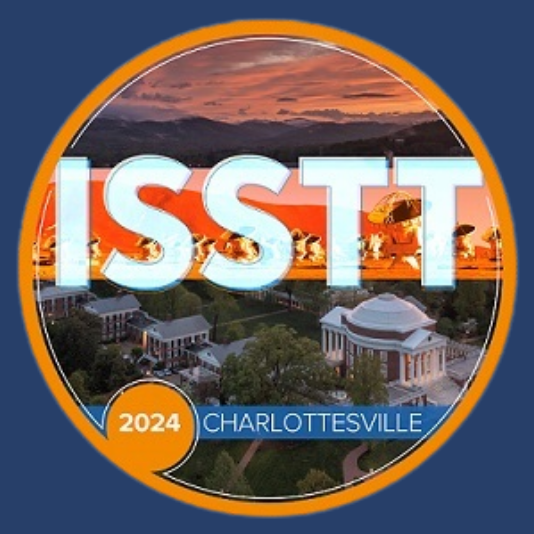
Registration is still open for the 2024 International Symposium on Space Terahertz Technology (ISSTT)! The Symposium will be held in Charlottesville, Virginia USA from April 7th to April 11th, 2024. Registration is available for in-person and virtual participation. Discounted rates, as well as lodging waivers, are available for all eligible students.
This year's Symposium will feature:
- a variety of presentations on current millimeter, submillimeter-wave and Terahertz technologies and applications in astrophysics, planetary science, Earth science and remote sensing.
- a special session on metamaterials.
- the Student Poster Competition in which winners can earn a ten minute oral presentation as well as a cash prize.
- two "Speed Geeking" sessions to help facilitate focus on additional posters in a new, more inclusive, interactive format.
- Solar Eclipse Party on the rooftop of the Quirk Hotel Monday afternoon!
Registration is open through March 18, 2024. Attendance is limited. For more information, visit the conference website.
ngVLA Project News
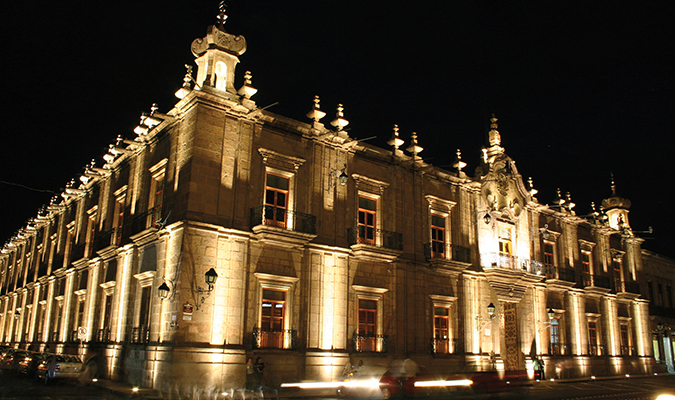
Follow the Monarchs: A Journey to Explore the Cosmos at (Sub)milliarcsecond Scales with the ngVLA
This ngVLA international science conference will be held November 11-14 in person in the UNESCO World Heritage site of Morelia, Mexico. The conference will highlight and explore the novel scientific opportunities that will unfold with the unprecedented angular resolution and sensitivity capabilities offered by this new flagship facility. The conference will coincide with the Monarch butterflies completing their migration journey from Canada and the US to the mountains surrounding Morelia. Stay tuned for more details.
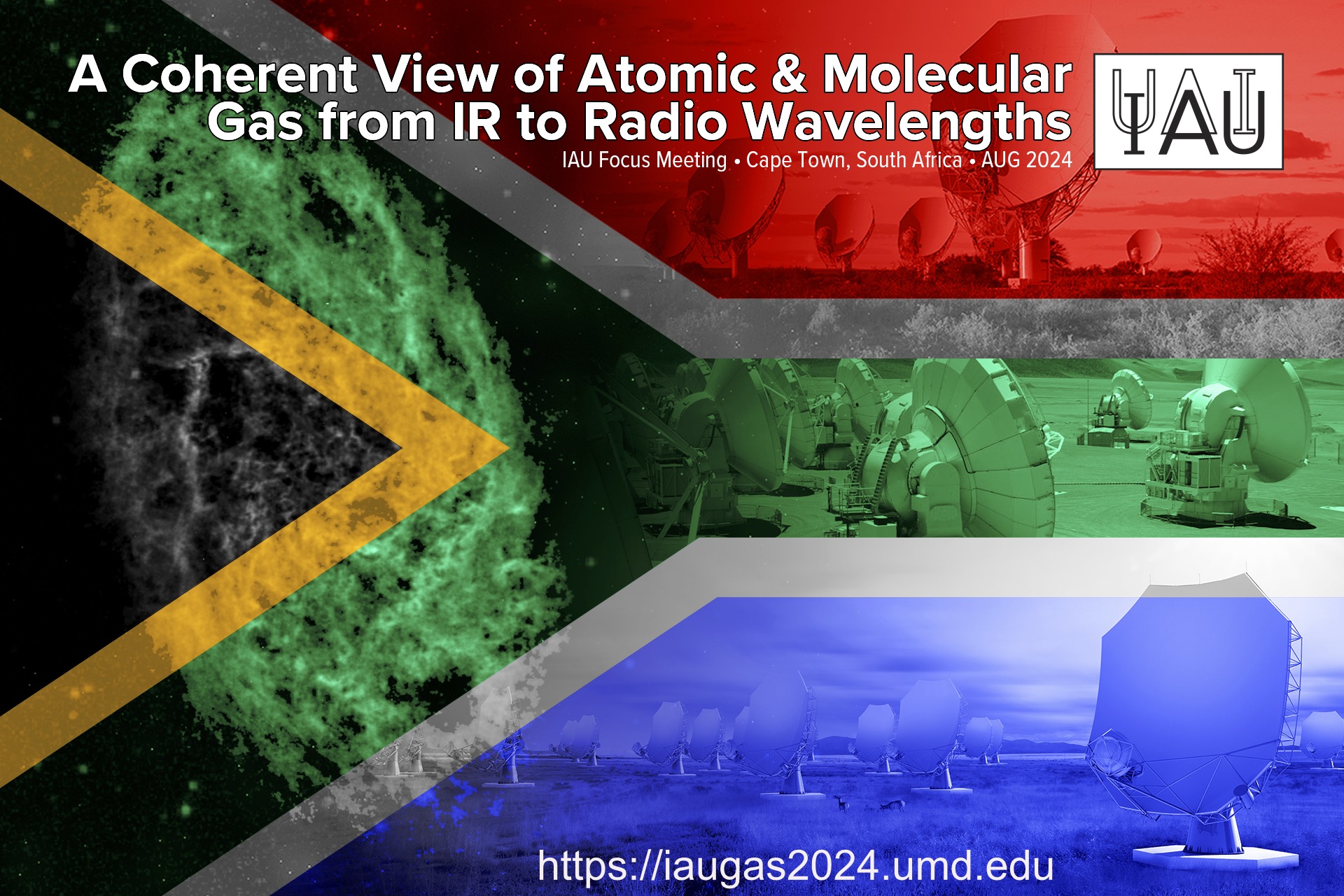
A Coherent View of Atomic and Molecular Gas from Infrared to Radio Wavelengths
Graphic by Jeff Hellerman
This IAU Focus Meeting 2 will be held August 6-7 in person in Cape Town, South Africa at the XXXII International Astronomical Union (IAU) General Assembly. The meeting will explore how the work taking place at existing facilities is shaping our understanding of the interstellar medium structure and feedback in our own Milky Way and external galaxies, and how this work is re-framing the science that will be addressed by the remarkable capabilities of future radio observatories. Abstracts and grant applications are due March 1. Registration for the IAU General Assembly is open.
ngVLA Science - Constraining the SMBH - Host Galaxy Interplay Through the Millimeter Fundamental Plane
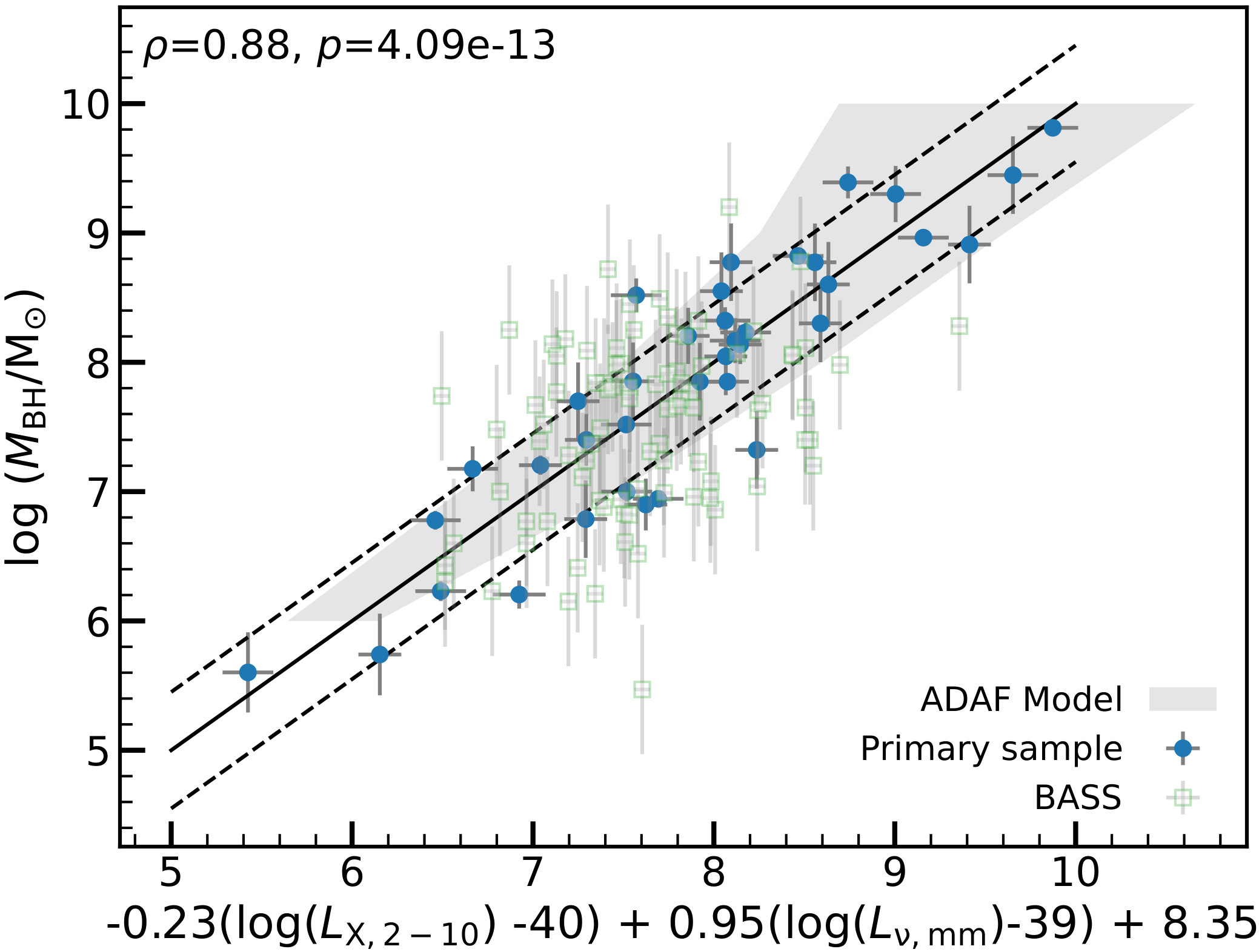
Edge-on view of the millimeter fundamental plane of black hole accretion. Circles and squares mark low- and high-luminosity AGN, respectively. Solid line shows the power-law fit. Grey area shows a grid of ADAF models projected onto the plane. See Ruffa et al. 2024 for details.
Active galactic nuclei (AGN) are divided into two major categories: high- (Seyfert or quasar-like) and low- (LINER-like) luminosity. These AGN are currently believed to be intrinsically different objects, characterized by very different inner geometries and mechanisms of accretion onto their central supermassive black holes (SMBHs): a thin disc of cold matter surrounded by a dusty torus in high-luminosity sources; and an inefficient hot and puffy flow of matter, such as an advection-dominated accretion flow (ADAF), in low-luminosity sources (e.g., Heckman & Best 2014). Deep, high-resolution observations of the continuum around SMBHs carry fundamental information about the underlying physics of accretion, and are thus key to distinguish between different processes.
In Ruffa et al. (2024), we report the discovery of what has been dubbed the "millimeter fundamental plane of black hole accretion". This is a tight correlation among the nuclear 1 mm luminosity from ALMA, the intrinsic 2-10 keV X-ray luminosity and the SMBH mass (see figure). Interestingly, the plane is found to hold for both high- and low-luminosity nearby AGN. Most strikingly, we find that for both types of AGN, models of the spectral energy distribution for ADAFs best explain the existence of the correlation. This suggests that radiatively-inefficient accretion processes such as those in ADAFs may play a key role in both low- and high-luminosity AGN. Although the exact conditions under which this applies are still to be investigated, it is clear that this result may revolutionize our understanding of SMBH accretion in different types of AGN.
Beyond providing information on the nuclear physics, the millimeter fundamental plane also provides a new rapid method to indirectly estimate the mass of an SMBH. Direct mass estimates can be obtained using a variety of techniques (e.g., stellar or gas kinematics, reverberation mapping), but typically require very time-consuming observational campaigns and currently have limited application beyond the local Universe. Thanks in particular to the unprecedented capabilities of the ngVLA, the fundamental plane will allow mass predictions for SMBHs up to z=1 and beyond. Next-generation satellites such as Athena will provide complementary X-ray data. The millimeter fundamental plane may thus be well suited to constrain the SMBH - host galaxy interplay in regimes that have been difficult to access up to now.
Since 2015 the acronym ngVLA has appeared in 1090+ publications indexed in the SAO/NASA Astrophysics Data System. This article continues a regular feature intended to showcase some of those publications. We are especially interested in showcasing work done by early-career researchers. The collection of showcase articles can be viewed online. Anyone wishing to volunteer to author a feature should contact Joan Wrobel.
2024 Jansky Lectureship - Call for Nominations
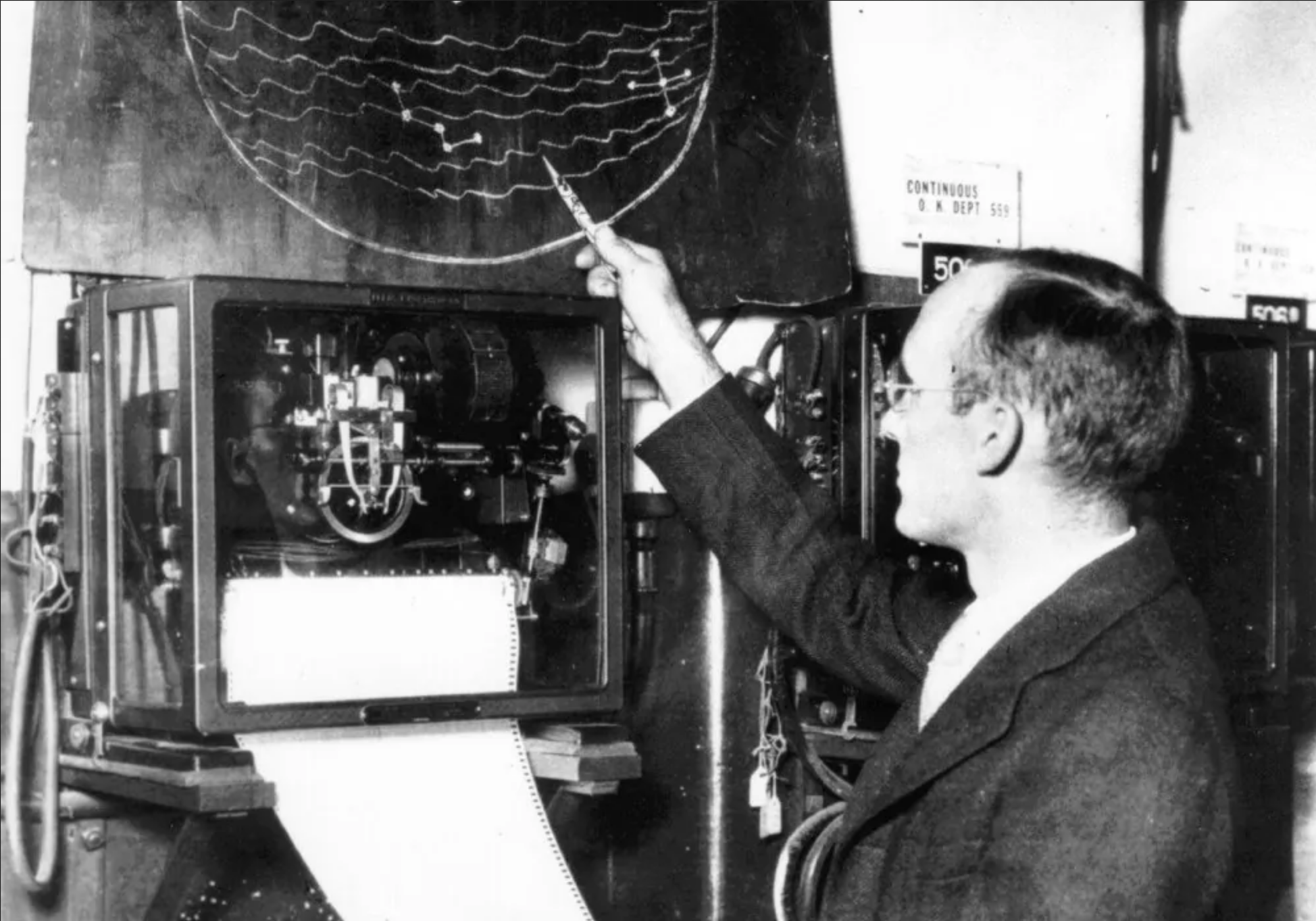
The Karl G. Jansky Lectureship is an honor established by the trustees of Associated Universities, Inc., to recognize outstanding contributions to the advancement of radio astronomy. First awarded in 1966, it is named in honor of the man who, in 1932, first detected radio waves from a cosmic source. Karl Jansky's discovery of radio waves from the central region of our Milky Way Galaxy started the science of radio astronomy.
The 2024 Jansky Lecturer will have made significant contributions related to radio astronomy, and will promote the appreciation of the science of radio astronomy through public lectures at the NRAO and GBO sites. A demonstrated ability to engage a wide audience will be a factor in determining the awardee. Visit the Jansky Lectureship website for a list of the previous recipients of this prestigious award.
Additional information, including the nomination and selection process, is available online.
Nominations for the 2024 award should be concise (~1 page) and address both the nominee’s contribution to the advancement of radio astronomy and their potential to increase public appreciation through the Jansky Lecture.
Nominations should be sent to JJ Burns by 29 March 2024.
NRAO and GBO scientific staff will be given an opportunity to vote on nominations received and the results will be included in the recommendation to the NRAO Director.
Astronomy in Chile Educator Ambassador Program (ACEAP) 2024
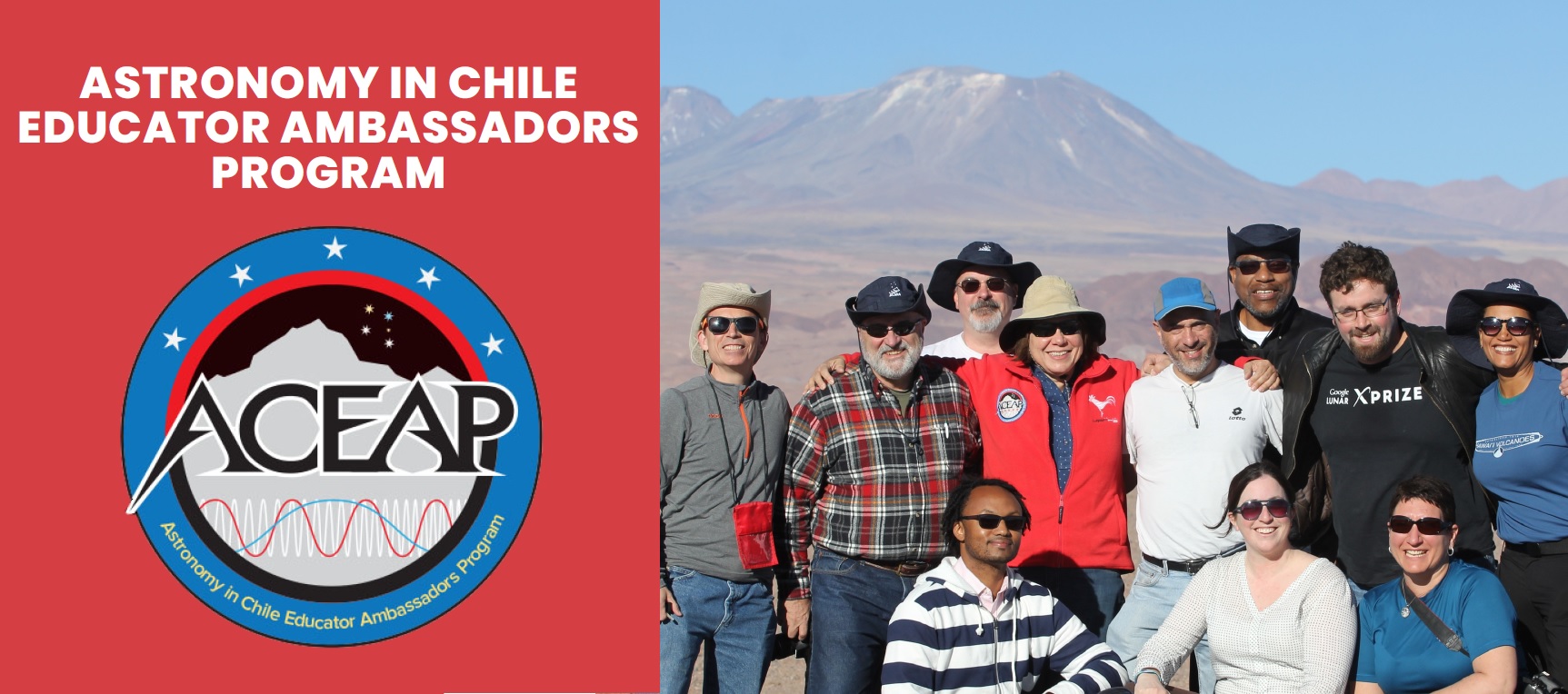
The new application process for the Astronomy in Chile Educator Ambassador Program (ACEAP) 2024 cohort has opened through May 31, 2024.
ACEAP 2024 applications are open! Selected ambassadors will attend a series of virtual meetings and online training to prepare for a nine-day Chile expedition. The nine-day expedition trip includes a behind-the-scenes visit to the ALMA, CTIO, Gemini facilities, as well as visits to smaller tourist-community observatories. You can be one of the 10 professionals selected to be part of the 2024 cohort. Ambassadors will travel to the north of Chile to the astronomical observatories to receive an extensive training about the instruments, the science, data products, and communicating STEM.For more information about eligibility and expedition details, please visit the website.
Open Position: VLA/VLBA Science Support Division Head
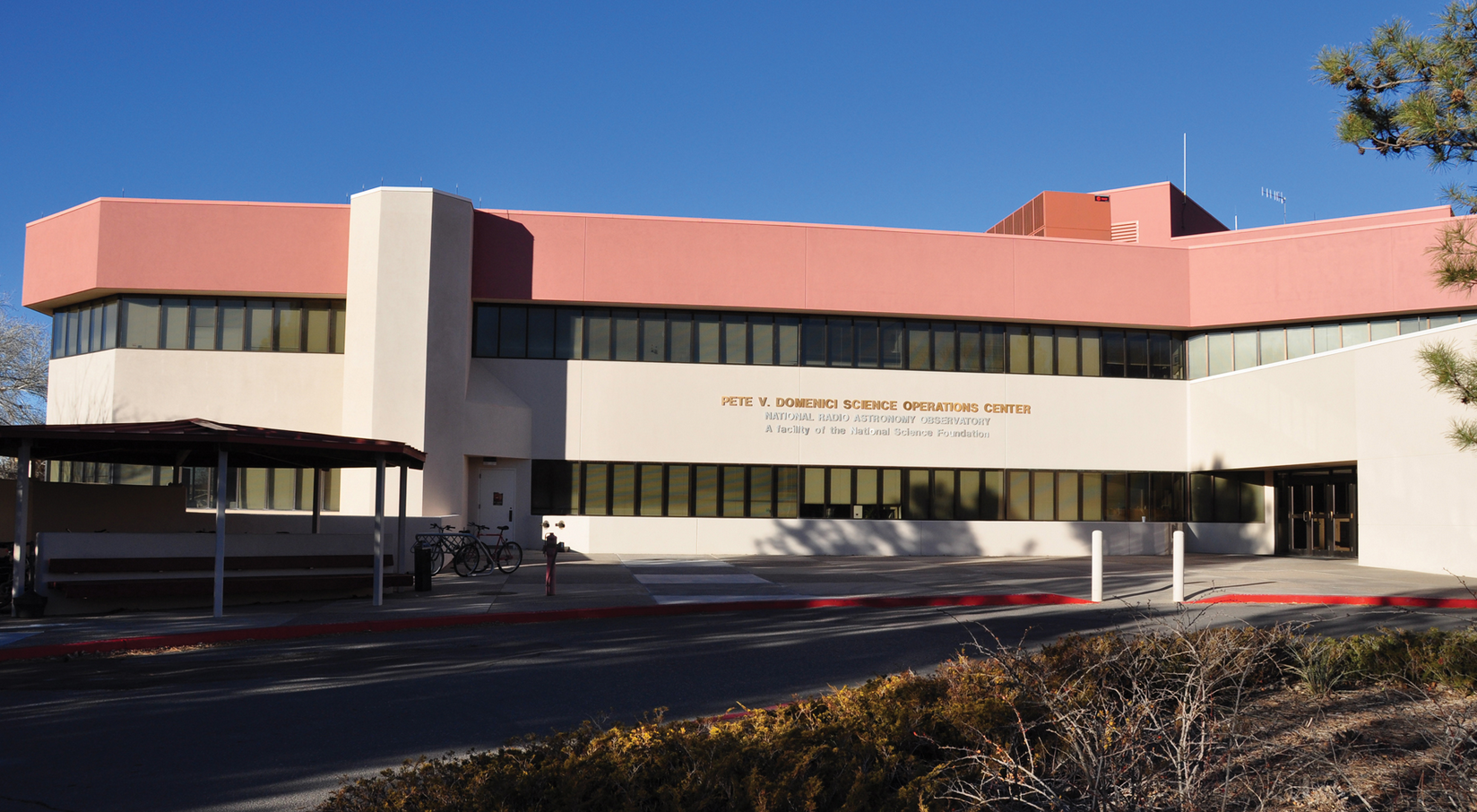
The National Radio Astronomy Observatory (NRAO) operates some of the world’s most impactful radio astronomy facilities for use by the international scientific community. The Very Long Baseline Array (VLBA) and the Jansky Very Large Array (VLA) are operated from the Domenici Science Operations Center on the campus of New Mexico Institute of Mining and Technology (www.nmt.edu) in Socorro, NM, and the Plains of San Agustin in west-central NM.
The NRAO is seeking a leader with experience in management and astronomical observatories to be the Head of the VLA/VLBA Science Support Division. This Division is responsible for all telescope and user-facing science support for the VLA and VLBA, including supporting the development of new capabilities for those instruments. The Division Head is responsible for the overall planning, coordination, direction, safety and management of the VLA/VLBA Science Support Division in NRAO New Mexico Operations (NM Ops). The Division Head develops and administers budgets, policies, procedures and practices to achieve the assigned goals of the Division, and recommends changes to policies and procedures to NM Ops management as needed. The Division Head is also responsible for charting Divisional programs and for broad supervision of their execution.
The position will be hired at the full Scientist (Astronomy) level. Scientists have 25% of their time for independent research, and high consideration will be given to applicants whose research utilizes NRAO facilities. The position will be based in Socorro, NM, a small, historical city in the Rio Grande Valley, 75 miles south of Albuquerque. A telework agreement that permits a partial work-from-home arrangement will be considered.
The NRAO is seeking candidates for a wide variety of positions. For a full list of open positions please visit our Careers Page. Also, to stay up-to-date on new openings sign-up for our Job Alerts.
SMA Call for Standard Observing Proposals - 2024A Semester

The Call for Standard Observing Proposals for observations with the Submillimeter Array (SMA) has been announced. This call is for the 2024A semester, with the observing period 16 May 2024 - 15 Nov 2024.
Proposal Submission deadline: Wednesday, 6 March 2024 21:00 UTC (16:00 EST).
We wish to highlight important upgrades to the data reduction path, which now include the ability to convert raw or calibrated SMA data into MeasurementSet format for reduction and/or imaging within CASA, along with initial gain tables for system temperature and passband calibrations.
The full Call for Proposals, with details on time available and the proposal process will be available on or before February 1, at the SMA Observer Center (SMAOC).
Details on the SMA capabilities and status can be found at http://sma1.sma.hawaii.edu/status.html; proposal creation and submission is also done through the SMAOC. We are happy to answer questions and provide assistance in proposal submission, simply email the SMA with any inquiries.
VLA Membership Program
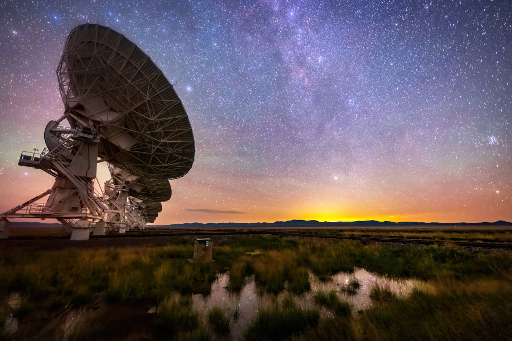
Photo courtesy of Bettymaya Foott.
The Very Large Array has a very large fanbase - and you are welcome to join! Thanks to the generosity of more than 300 members, we are funding transportation for K-12 field trips to the VLA. As a member your support brings inspiring STEM education to young people. If you would like to join, visit the Membership Website.
Recent Science Media Releases
|
Can Astronomers Use Radar to Spot a Cataclysmic Asteroid? |
|
|
German Astronomers Share Proposed Science for the ngVLA
|
|
|
NAC Student Researchers Receive Prestigious Chambliss Medals at AAS 243 |
|
|
Astronomers Discover Jupiter-sized Objects Drawn into Each Other's Orbit |
|
|
Telescopes Show the Milky Way's Black Hole is Ready for a Kick |
|
|
ALMA Gets a New Heartbeat |
|
|
First Recipient of Women in Engineering Fellowship Joins Staff of Central Development Laboratory |
|
|
Contact the NRAO press office to share your new and exciting science results. |
From the Archives
Ellen Bouton
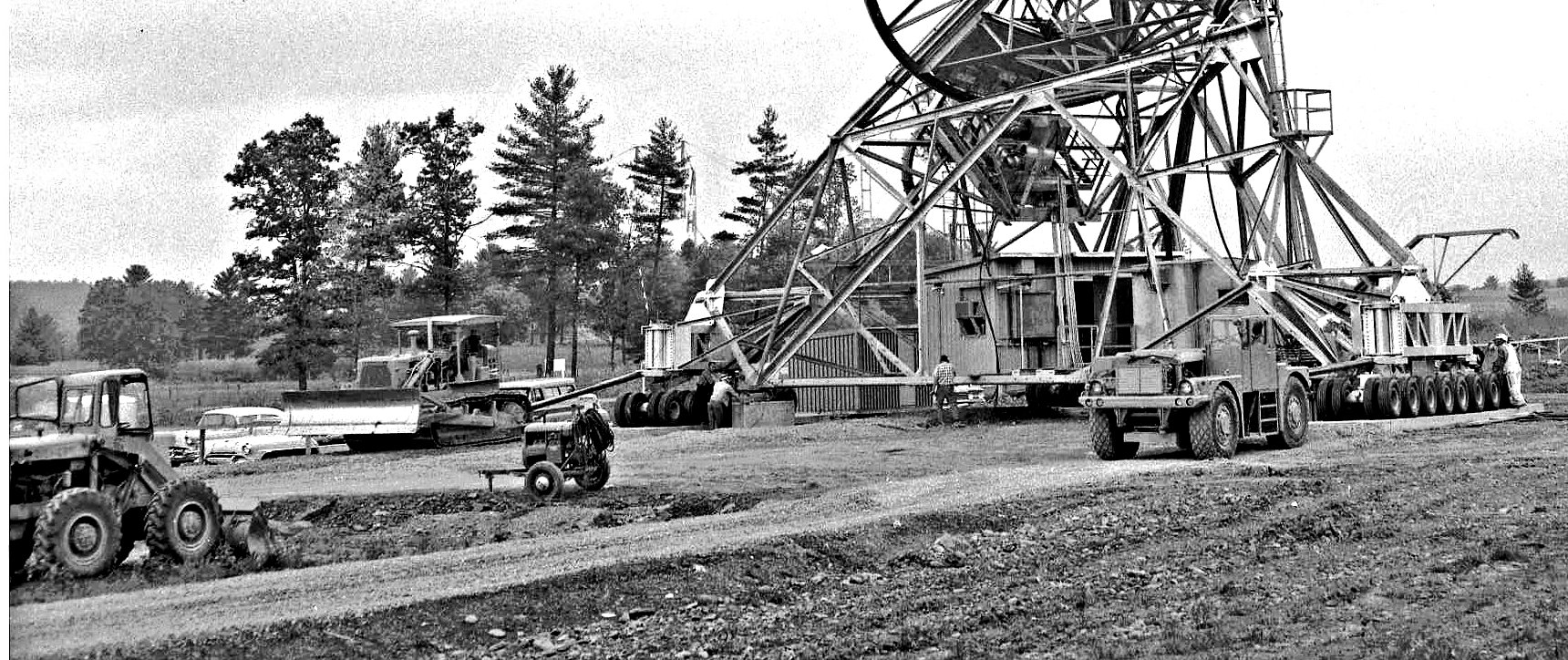
About this month's photo: In January 1963, as NRAO scientists began to think about an array of antennas (what eventually became the VLA), the AUI Board approved NRAO Director Dave Heeschen's request to obtain a second 85 foot antenna in Green Bank in order to "gain experience with interferometers." The 85-2 was a duplicate of the Tatel Telescope, 85-1, except that it was mounted on 96 truck tires and could be towed by two bulldozers along a roadway to stations where it was bolted down for actual observing. In this photo from May 1964, 85-2 is moved into place. The less than satisfactory experience of moving GBI antennas along the roadway led to an early decision that specially designed transporters would move the VLA antennas along railway lines - no more muddy or snowy pushing and pulling with bulldozers!
From the Archives is an ongoing series illustrating NRAO and U.S. radio astronomy history via images selected from our collections of individuals' and institutional papers. If readers have images they believe would be of interest to the Archives, please contact Ellen Bouton.


